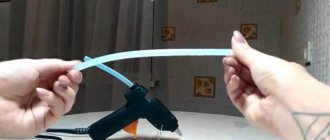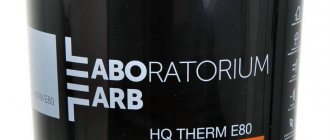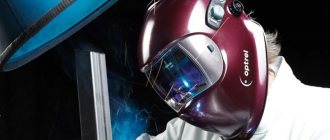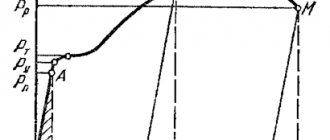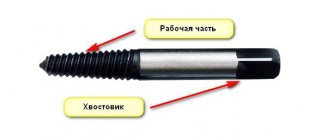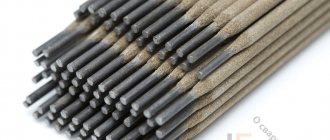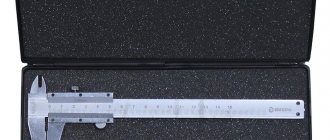Recently, heat-resistant fabrics and fibers have become very popular. After all, they are used not only in the creation of special clothing, but also in construction, for example, as finishing materials. But, before buying such materials, it is important to know their features, varieties and areas of application.
The variety of heat-resistant fabrics is large and created for completely different purposes. There are such types: carbon fibers, quartz fibers, asbestos fabric, aramid fabric, canvas fabric, silica fabric. Each of these species has its own characteristics, characteristics and distribution area.
What it is
Let us answer the question, what kind of fabrics are these that do not burn? Such materials primarily include the long-known, non-flammable asbestos fabric, used at temperatures up to 500℃. Made from the natural layered mineral asbestos, it does not contain combustible organic substances, therefore, in the full sense of the word, it is non-flammable.
On this topic ▼
Workwear and suits with fire retardant impregnation
The second type of fabric from which fire-resistant workwear for welding and protective suits for working in hot shops are made are high-density natural materials made from cotton and linen.
For example, tarpaulin fabric, additional resistance to direct contact with open fire, the high-temperature thermal effects of which is imparted by fire-retardant impregnation with various types of fire retardants.
This fabric is fire-resistant in its properties, as it is capable of resisting flames and high temperatures for a short period, which makes it possible to reliably protect a person wearing protective clothing made from it in the area of direct contact with negative influence factors.
In addition to these most famous examples, there are many other types of both flame retardant and fire resistant textile materials used in a wide variety of fields.
Fireproof fabric
Disadvantages of heat-resistant fabrics
Unfortunately, some heat-resistant fabrics are very expensive. Aramid and quartz fabrics are expensive due to their rarity and complexity of production. But, they are distinguished by their excellent qualities. Some thermal fabrics can be too heavy , which will be a big disadvantage, for example, when working as a firefighter. Therefore, when choosing a heat-resistant fabric, you need to know its composition and choose accordingly to the area of use.
It is worth paying attention to the composition of the fabric. For example, the fabric can be 100% cotton, but treated with special fire-resistant agents. Or it contains special heat-resistant fibers that provide heat resistance. But, fabrics with special impregnations, at high temperatures, can char and release gas. It is these additives that inhibit combustion for some time.
Types and characteristics
Depending on the component that is the basis for the production of non-flammable or fire-resistant fabric materials, the following types of fabrics are distinguished:
Silica
Also called silicate, quartz. They are made from SiO2 - silica (silicon dioxide), quartz, and other silicates. Such materials work stably up to temperatures of 1250℃, breaking down only above 1700℃. They have a low thermal conductivity coefficient, high electrical insulating properties, and are environmentally friendly.
Fiberglass
These are materials that can withstand short-term heating up to 700℃, sudden cooling down to -200℃, and constantly operated at temperatures up to 550℃. Distinctive characteristics - low weight, high tensile strength, low coefficient of linear expansion, dielectric properties; resistance to ultraviolet radiation, moisture, microorganisms.
Basalt
Made from basalt fibers by melting it. Withstands temperatures up to 700℃. They also produce non-woven fire-retardant basalt material used for structural fire protection of metal structures and filling openings in fire barriers.
Asbestos
Obtained on the basis of fibrous material - asbestos, in combination with various inorganic additives in order to hide and bind the dangerous carcinogenic effects of this natural material when its dust is inhaled.
Carbon
They are produced by weaving from threads made from pure carbon fibers. They are lightweight, stretch-resistant, can withstand temperatures up to 370℃, but are still capable of linear expansion.
Aramid
These are the most innovative fabrics made from polymers - aromatic polyamides. They are extremely durable, even going so far as to make bulletproof vests out of them; resistant to fire, intense heat up to a temperature of 400℃.
Polyester
Made from polyester threads with a high content of phosphorus compounds. When exposed to open fire, they do not ignite, do not melt, and become charred and decrease in size.
As well as various types of sewing and finishing fabric materials subjected to fire retardant treatment by dipping and spraying fire retardants. After such impregnation, it is difficult to set them on fire with low-calorie fire sources; they do not burn, but become charred.
Wool
Which fabrics are the most fire resistant?
Wool is generally considered the most fire-resistant natural fiber because it is difficult to ignite and flames are often extinguished in the fibers. Natural fibers such as silk, cotton and wool are more susceptible to fire than manufactured fibers, but fabric manufacturing techniques can improve their fire resistance. Natural fibers can be treated with a chemical solution that improves fire resistance. When a natural fiber material is made with a tight weave, the material provides improved fire resistance.
Requirements
At the time of writing, there are no national standards defining the production of non-flammable, fire-resistant fabrics that do not burn well. Therefore, companies that produce this group of textile materials themselves develop technical specifications that regulate the entire production process.
In addition, specifications are a mandatory document provided by the manufacturer for certification fire tests of serial products, necessary to obtain a fire safety certificate.
Testing non-flammable fabric for flammability
Requirements and test methods relating to the main characteristic - the flammability of fabrics - are set out in the following fire safety standards:
- GOST R 50810-95, which classifies decorative textile materials based on the flammability test method.
- NPB 257-2002. This document regulates testing methods for flammability, smoldering, flame sustained and residual combustion of textile materials - curtains, drapes, bedding, upholstery.
Such tests involve exposing selected tissue samples to the flame of a laboratory gas burner or a smoldering cigarette; and the results obtained objectively show how well their fire protection treatment was carried out with fire retardant solutions.
How to order FERUM materials
Just contact us
- Call
- Request a call back
- Write
We'll help you fill out an application for a quote.
- We will find out all the necessary parameters for fire protection of your facility
Let's calculate the required amount of material
- Based on your parameters
- Taking into account fire safety standards
We will ship from warehouse or make to order
- From 1 day
- Pickup or delivery
- Guarantee
The fire-resistant fabric Ferum-MEI developed by us for removable insulation is successfully used in many industries for the production of unique protective products and protective covers, flexible impermeable inserts. Heat-resistant fabric can also be used to protect pipelines, for welding work and in many other cases.
The heat-resistant fabric ferum-MEI does not burn, it is waterproof and easy to work with - cutting and sewing.
Meets the requirements of clause 221 of PPB SRS 01-2009 “Fire safety rules on ships under construction and repair”, PUE “Rules for the installation of electrical installations” clause 7.6.34.
Purpose
Fabric materials based on asbestos, due to its carcinogenic properties, are practically no longer used in the production of fire-retardant elements of overalls for firefighters and metallurgists, but are widely used as asbestos-technical, fire-resistant heat-insulating products, including in aggressive chemical environments.
Polyester, as well as some varieties of aramid fire-resistant fabrics, serve as the starting material for curtains used for the stage of theaters and clubs; for restaurants, hotels. Wherever there are a lot of people constantly or regularly, there is a possibility of draperies, drapes, curtains coming into contact with ignition sources.
On this topic ▼
Fire retardant impregnation: requirements and procedure for processing materials
Furniture manufacturers also use these types of fire-resistant fabrics as furniture upholstery, which cannot be set on fire by a fallen smoldering cigarette.
For mittens included in the sets of special clothing for firefighters, workers in hot shops of metallurgical and energy production, carbon, silica, basalt fire-resistant materials are used, as well as fiberglass, which is the surface layer of both hand protection means and workwear in general.
Special clothing and suits with fire-retardant treatment are also made from linen and cotton fabrics of high density and thickness of the material.
They are used by gas and electric welders, blacksmiths, boiler house workers, hot shop workers of other industries.
For welding
Only from us: you can buy non-flammable fabric for welding from 1 m2 and thread from 10 m/line. Prices from 900 rub. There are more than 5000 m2 of fabrics in stock in Moscow - delivery throughout Russia.
The quality of fire-resistant fabrics is of the highest world level.
The best Russian and foreign brands.
| Coating | Without cover |
| Maximum temperature, *C | 400 |
| Thickness, mm | 0,29 |
| Color | Golden (yellow) |
| Weight, g/m2 | 250 |
Base: Aramid Maximum application temperature.
| Coating | Without cover |
| Maximum temperature, *C | 400 |
| Thickness, mm | 0,35 |
| Color | Golden (yellow) |
| Weight, g/m2 | 300 |
Base: Aramid Maximum application temperature.
| Coating | Without cover |
| Maximum temperature, *C | 400 |
| Thickness, mm | 0,44 |
| Color | Golden (yellow) |
| Weight, g/m2 | 350 |
Base: Aramid Maximum application temperature.
| Coating | Without cover |
| Maximum temperature, *C | 400 |
| Thickness, mm | 1,5 |
| Color | Golden (yellow) |
| Weight, g/m2 | 680 |
Base: Aramid Maximum application temperature.
| Coating | Without cover |
| Maximum temperature, *C | 1400 |
| Thickness, mm | 1,3 |
| Color | Grey |
| Weight, g/m2 | 1150 |
Silica fabric N_1150SF_XT consists of interwoven silica fibers and is made from .
Silica fabric N_1250SF_XT consists of interwoven silica fibers and is made from .
| Coating | Without cover |
| Maximum temperature, *C | 1200 |
| Thickness, mm | 0,75 |
| Color | Grey |
| Weight, g/m2 | 600 |
Silica fabric N_600SF consists of interwoven silica fibers and is made from cheese.
| Coating | Polyurethane |
| Maximum temperature, *C | 200 |
| Thickness, mm | 0,75 |
| Color | Dark grey |
| Weight, g/m2 | 610 |
Silica fabric N_610SF_PU with polyurethane coating is composed of interwoven silica fibers.
| Coating | Without cover |
| Maximum temperature, *C | 1400 |
| Thickness, mm | 1 |
| Color | Grey |
| Weight, g/m2 | 880 |
Silica fabric N_880SF_XT consists of interwoven silica fibers and is made from s.
| Coating | Vermiculite |
| Maximum temperature, *C | 850 |
| Thickness, mm | 1,3 |
| Color | Grey |
| Weight, g/m2 | 1260 |
Base: Fabric E-glass Width: 10.
| Coating | Aluminum |
| Maximum temperature, *C | 200 |
| Thickness, mm | 0,4 |
| Color | Silver |
| Weight, g/m2 | 460 |
Base: Fabric E-glass Width: 10.
| Coating | Silicone |
| Maximum temperature, *C | 250 |
| Thickness, mm | 0,42 |
| Color | Gray-silver |
| Weight, g/m2 | 510 |
Base: Fabric E-glass Width: 15.
| Coating | Aluminium/Silicone |
| Maximum temperature, *C | 200 |
| Thickness, mm | 0,72 |
| Color | Silver |
| Weight, g/m2 | 650 |
Base: Fabric E-glass Width: 10.
| Coating | Vermiculite |
| Maximum temperature, *C | 1100 |
| Thickness, mm | 1,3 |
| Color | Brown |
| Weight, g/m2 | 1250 |
Base: Fabric E-glass Width: 10.
| Coating | Vermiculite |
| Maximum temperature, *C | 1100 |
| Thickness, mm | 0,62 |
| Color | Brown |
| Weight, g/m2 | 620 |
Base: Fabric E-glass Width: 10.
We offer you the ideal workwear in which to work comfortably, pleasantly and safely. We sew only from durable, high-quality materials that are durable for protection and comfortable to wear. All fabrics are not only comfortable, but also safe for humans, and also meet the necessary sanitary standards.
This is interesting: Fire retardant pastes: purpose, types and scope of application
Application area
Fire-resistant fabrics/mats are made from fiberglass and asbestos fabrics, which are an effective means of extinguishing small-area fires in fire-hazardous industries during hot work.
Silica, basalt fabric, non-woven materials are used:
- For thermal insulation of heat-generating units, pipelines, including those transporting flammable liquids. For example, for a pipe for supplying heating oil to a boiler in a thermal power plant.
- For flow filtration, as a filler for fire arresters when transporting flammable liquids.
- As fire-resistant heat shields in metallurgical shops and gas-electric welding production areas.
- In the production of roller fire curtains, screens, curtains.
- In construction, as non-flammable breathable membranes, floor insulation coatings; wind protection, vapor barrier of roofs, building facades.
Aramid, hydrocarbon fabrics, being less resistant to fire, more expensive compared to silica, basalt fiberglass materials, are less common, but are also used as inserts, elements in the production of workwear, and for technical production purposes.
Texture of fire-resistant fabrics for curtains
Carbon non-flammable sheets
All natural fabrics are made from organic raw materials, which means they contain carbon atoms, in addition to which there are large quantities of other atoms: oxygen and hydrogen.
The presence of the latter structural units significantly increases the flammability of any product. Almost two centuries ago, it was possible to synthesize non-flammable fibers consisting only of carbon atoms. The high heat resistance of the filaments made it possible to use them in incandescent lamps.
Subsequently, the technology was improved many times, leading to the development of an easy-to-implement production process that allows the use of a variety of organic raw materials as a carbon source.
Now carbon fibers are made from viscose and polyacrylonitrile, long and short, in the form of staple elements. Fire-resistant fabrics are produced by weaving using classical weaving methods; in addition, non-woven carbon heat-resistant products are presented on the market.
Non-flammable fabrics made from carbon filaments have great resistance to stretching, chemical influences, low weight and the ability to expand when the temperature rises. The maximum temperature they can withstand reaches 370℃.
Trade marks
There are many types and brands of both completely non-flammable and fire-resistant fabrics on the market:
- Tend building fabric is a non-flammable material that corresponds to group NG, hazard class KM0. It is used as a steam-, wind-, and heat-insulating material for ventilated facades, roofs, and floors of buildings. The material is resistant to moisture, aggressive environments, sudden temperature changes, and exposure to ultraviolet rays.
- Thermally resistant silica fabric KT-11 . SiO2 content – up to 99%. The main qualities are fire resistance up to 1200℃ (long-term), strength, dielectric, environmental properties, which makes it a multifunctional material.
- Basalt fabric TBK-100 coated with metal foil. The operating temperature range is from – 200 to + 650℃, melts at 1100℃. Used in the production of rolled roofing materials as thermal insulation.
- Izoltex fabric is made from fiberglass. Operating temperature – up to 560℃, maximum short-term – 700℃. It has excellent thermal insulation properties, is chemically inert to strong organic and mineral acids, concentrated solutions of alkalis. An excellent substitute for asbestos fabrics, used in construction and various industries.
- Kevlar, Arcelon, Terlon, Kermel, Nomex are various trademarks, names of types of aramid fabrics that are thermally resistant in the range from 250 to 400℃.
For fire-retardant treatment of natural fabrics, the following impregnations are used: “Negorin-fabric”, “OGNEZA-PO”, “Nortex”, “ANTAL TM”, which do not change their appearance, do not reduce strength, and do not have an unpleasant odor.
Important: for each batch of such products, regardless of the volume of the batch, the customer (buyer) has the right to demand a fire safety compliance certificate, which specifies all the necessary characteristics.
Non-flammable fire-resistant silica fabric KT-11-S8/3 (width 940 mm)
Application of fabric (1000 ºС for a long time)
It is used as high-temperature thermal insulation and thermal protection in various branches of technology from molten metal splashes during welding and protection of devices and equipment from exposure to high temperatures. (working temperature 1000 C). The fabric is used to make fire blankets, curtains and pads to protect against splashes of molten metal, from flames and excess heat, and mats for welders. Also as a filler for acid-resistant and moisture-resistant radio-technical and radio-transparent materials. Excellent electrical insulation in conditions of high temperatures and high humidity. Indispensable in the manufacture of clothing and rescue devices for firefighters.
- in oil and gas processing, nuclear energy - as a thermal barrier to protect equipment, high-temperature insulation of furnaces, turbines. in metallurgy - for thermal protection, fire-resistant substrates, gaskets and blankets that protect from flames, splashes of molten metal and excess heat. in construction — for the production of fire protection panels, screens and curtains.
- in aviation, automotive - for the production of composite materials. High temperature fabrics are available with different silicon oxide (SiO2) contents
Technical characteristics of silica fabrics:
| PS-120 | linen | 120±25 | 0.20÷0.05 | 7-12 | (880,1000)±20 |
| KT-180 | linen | 180±20 | 0.25÷0.05 | 7-12 | (880, 1000)±20 |
| KT-11 | linen | 300±30 | 0.35÷0.05 | 7-12 | (880)±30 |
| KT-11-TO | linen | 300±30 | 0.44÷0.05 | no more than 1.0 | (820, 880)±30 |
| PS-600-S | satin 8/3 | 600±60 | 0.58÷0.06 | 7-12 | (940)±20 |
| KT-11-C8/3 | satin 8/3 | 600±60 | 0.58÷0.06 | 7-12 | (940)±20 |
| KT-11-C8/3-TO | satin 8/3 | 600±60 | 0.58÷0.06 | 7-12 | (1000, 1200)±20 |
| TKT-11-C8/3-TO | satin 8/3 | 600±60 | 0.60÷0.06 | no more than 1.0 | (1000, 1200)±20 |
| PS-600-TO | satin 8/3 | 600±60 | 0.60÷0.06 | no more than 1.0 | (1000, 1200)±20 |
| PS-1000-S | satin 12/5 | 1120±122 | 1÷0.06 | 7-12 | (940)±20 |
| KT-11-S12/7 | satin 12/7 | 1000±100 | 1÷0.06 | 7-12 | (940)±20 |
| KT-11-S12/7-TO | satin 12/7 | 1000±100 | 1÷0.07 | no more than 1.0 | (895, 1520)±20 |
| PS-1400-S | matting | 1400±140 | 2÷0.2 | 7-12 | (950, 1000)±20 |
*THE heat treated
termoizol24.ru
Treatment with fire-resistant coatings
Almost any material can be made heat-resistant due to fire-resistant impregnation, which contains non-flammable chemicals. As a rule, these are fire retardant compounds. They are also often used for wood processing. This treatment has a significant advantage: it does not last long at all, but at the same time it retains its properties only for a year, then it needs to be renewed.
You might be interested in Description of non-woven fabric: what kind of fabric is it, where and how is it used
Another drawback is that the product may be coated unevenly, so there may be stains in some places and an oily coating in others. When washing, the impregnation is gradually washed off, so items after water need to be treated more often than once a year.
The received product must be accompanied by a fire safety certificate.
Non-flammable form
Synthetics
The most common synthetic fabrics are nylon and Oxford. The materials perfectly protect against snow and rain, wind, dust and dirt. Most often they are used to make raincoats and jackets. Soft and pleasant to the touch fleece or faux fur is used as insulation.
Features of materials for workwear
Material for workwear must meet the following requirements:
- high degree of comfort;
- hypoallergenic;
- protection from negative external factors;
- aesthetics.
It is important that the overalls help to perform work duties; for this purpose, the models are equipped with a large number of pockets and carabiners. For outdoor work, there are options with detachable hoods and high stand-up collars. The fasteners are usually covered with wind flaps, which prevent precipitation from getting under the protective clothing.
Summary table of fabrics for sewing workwear
The SWG company is engaged in tailoring custom-made uniforms for any field of activity. We take into account the characteristics of the material for workwear and select the highest quality and durable fittings. You can see the detailed characteristics of the materials in the table below.
| Fabric name | Fabric structure |
|
Asbestos
Asbestos materials are made from non-flammable natural silicates with thin fibers.
Asbestos tolerates heat up to 500 ℃, has great insulating properties, and is widely used in industry for the production of heat-resistant building materials.
The fire resistance of asbestos fabrics is great, but they must be used with great care. Using it as a nightmare to quickly extinguish fires is quite justified, but wearing clothes made of fabrics with asbestos is unacceptable for a person.
It has been proven that inhalation of asbestos microparticles initiates the appearance of formations, while the entry of fibers into the body through the food tract does not cause consequences. The risk of harmful effects can be reduced by introducing anti-dust additives that prevent particles from entering the environment. Additional processing increases the price of asbestos products, significantly increasing their safety.
Aramid
Aramid materials are a polymer product that has longitudinal and cross-linking of aromatic structures.
There are several options for connecting benzene rings, depending on which of them is implemented in a particular technology, the resulting fabric will have certain properties.
Reliable fire protection (resistance when heated to 370 ℃) is provided by para-aramid fabrics, the production of which can be carried out in various types of thread weave: waffle, satin, twill, plain.
Sometimes non-flammable aramid products are knitted and sold as rolled heat-resistant knitwear.
All types of products made from heat-resistant aramid are lightweight, high strength, and are used for sewing workwear and military uniforms; manufacturing of thermal insulation products.
Polyester
Fibers and threads synthesized from polyesters become resistant to high temperatures when phosphorus compounds are added to the raw material.
The German brand labeled its products with the name Trevira. In the production of heat-resistant materials from organophosphorus threads, different types of weaving are used, as a result of which fabrics with non-flammable properties are produced, such as rep, voile, moleskin, jacquard, satin, velvet.
Fire-retardant velvet fabrics are needed more for beauty, combined with safety; moreover, moleskin, for example, demonstrates not only increased heat resistance, but also significant dust-proof properties.
Polyester flame retardant fabrics have a varied, beautiful appearance; have the following advantages:
- practicality;
- wear resistance;
- ability to maintain shape well;
- inertness to the action of the sun;
- hygiene;
- security.
When exposed to a fire zone, the fabric shrinks in size without melting and chars without emitting toxic gaseous products.
The materials are highly breathable, durable, and are used in medical institutions, hotel complexes, and vehicles.
Polyester non-flammable textiles are easily washed without changing properties in ordinary warm water with temperatures up to 40 ℃. Washing can be done both in a machine and in the usual manual way. Dry cleaning in specialized establishments that have the skills to work with such material is completely acceptable.
After wet processing, the products must dry well under natural conditions; subsequent storage is allowed at standard room temperatures and air humidity.
Quartz
The fibers are obtained from drawn quartz of natural origin by heating to high temperatures.
This process is labor-intensive, but the result is impressive with its highly expressed fire-retardant properties. The non-flammable material produced by this method contains up to 99% silicon oxide, is very similar to fiberglass, and can withstand heating up to 1400 ℃ without changing its structure and properties. Quartz non-flammable material is used in the chemical and energy industries for technical purposes and for making protective clothing. For a short time, the material can withstand heating up to 2000 ℃.
Modernized quartz fabrics, which have greater heat resistance, were used at the end of the last century to cover the spacesuits of American astronauts, as the best option for fire-fighting materials existing at that time.
The main advantage of the products is absolute safety for humans, which distinguishes them from some other types of non-flammable textile products.

